- Home
- Chainsaw Maintenance
- Fix a Chainsaw
Fix A Chainsaw
This post may contain affiliate links so I earn a commission.
If your chainsaw won’t start, you might be curious about the best way to fix a chainsaw so you can get it back up and running as quickly as possible.
Don’t rush into any DIY repairs without fully understanding how your saw works - or what’s wrong with it.
This can result in more extensive damage and potentially even injury.
Consider this guide to help you diagnose and repair some of the most common chainsaw issues.
Fix A Chainsaw Fast: Troubleshooting 10 Common Issues
Here are some of the most common issues that might befall your chainsaw - and quick fixes you can implement to resolve them on your own.
1. Defective Spark Plug
If your chainsaw won’t start, there is a good chance that the spark plug is to blame.
Without a functional spark plug, a saw cannot create enough electrical current to ignite.
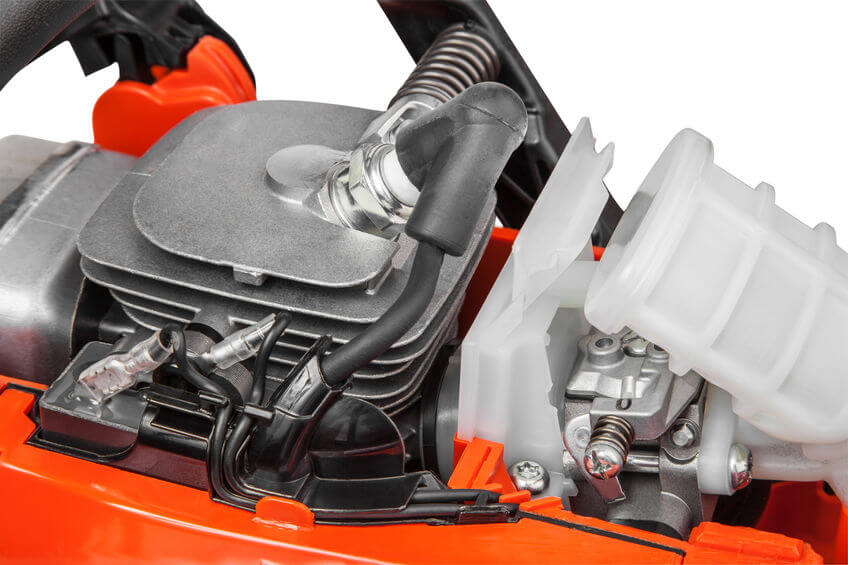
To fix a chainsaw with a defective spark plug, remove the spark plug from the saw and take a close look at it.
If it’s dirty, damaged, corroded, or cracked, you might need to replace it.
The same goes for spark plugs with damaged electrodes or heavy carbon build-up.
2. Clogged or Damaged Carburetor
Sometimes it’s not the spark plug but instead the carburetor that’s making it tough for your saw to run.
A carburetor works to mix fuel and air, helping to start the internal combustion engine.
If fuel has been left in the saw for too long (an issue we’ll talk more about later in this post), it can cause the carburetor to become gunky and stinky.
To fix a chainsaw with a clogged or damaged carburetor you'll need to clean it out.
Drain the fuel from the saw, then spray the carburetor with a cleaning solution meant specifically for chainsaw carburetors.
Wipe it clean and try to start your saw again.
3. Engine is Flooded
One of the most common reasons why a chainsaw won’t start is because the engine is flooded.
If you repeatedly tried to start the saw with the recoil starter you may have flooded the engine with fuel.
You’ll know this is the issue if you smell a heavy scent of gas.
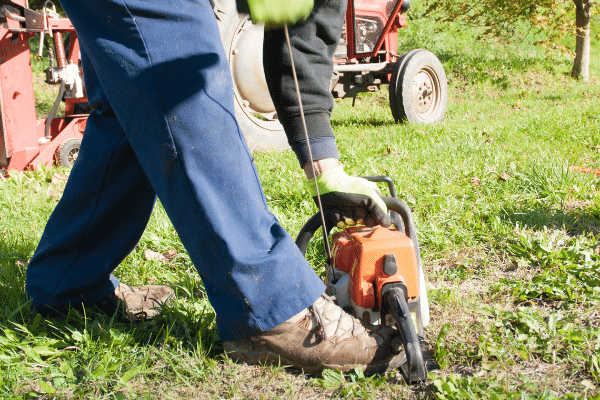
The best way to fix a chainsaw with a flooded engine is to pull the starter cord three or four times while holding the throttle, then to dry and replace the spark plug.
Try starting it up again to see if that solved your problem.
4. Dull Chainsaw Chain
Sharpen your chainsaw chain before each and every use, as well as when it becomes dull.
A damaged chain will need to be replaced, but often, a saw that isn’t cutting correctly shouldn’t be blamed on a defect, but instead on dullness.
5. Damaged Ignition Coil
An ignition coil is responsible for sending voltage to the spark plug, helping to create a spark that will ignite the fuel and power up the chainsaw.
If your saw doesn’t turn on, the coil might be broken.
This can happen gradually over time if you use your saw regularly.
The only way to know for sure that this is your issue is to purchase an ignition coil tester - if that proves to be the issue, you will need to replace the ignition coil.
6. Oil And Gas Mixture Incorrect
Fail to mix your oil and gas correctly - or at all - and your chainsaw is going to become majorly defective.
Do not use gas blended with ethanol or methanol, as this can become acidic and foul up your engine.
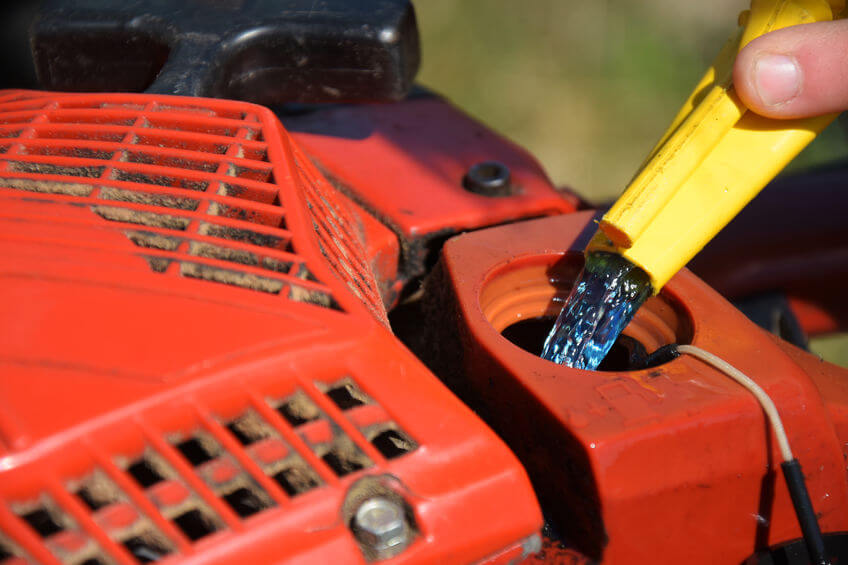
Remember to always mix oil and gas to prevent the engine from burning out and mix it outside of the saw to prevent any damage.
Your chainsaw’s owner manual will tell you the exact ratio of oil to gas mixture for your make and model of saw.
7. Defective Recoil Starter
When you pull the starter rope for your saw, it engages the internal starting mechanisms that power up your chainsaw engine.
If the recoil starter is damaged or not assembled correctly, the engine won’t start.
It’s as simple as that.
To fix a chainsaw with this problem, remove the starter from the chainsaw.
You’ll need to take a close look at what’s going on inside your saw.
In some cases, a stuck pulley is the issue and can be resolved by putting it back into the proper position.
If that doesn’t fix it, then you probably need to replace your recoil starter.
8. Clogged Or Dirty Air Filter
An air filter is an essential component of a chainsaw because it can help enhance the performance and lifespan of your saw.
Make sure you clean your air filter every 15 tanks of fuel or after every five hours of use, whichever comes first.
It’s spongy, so to get rid of debris, all you need to do is remove it from the saw, wash it in soapy water, rinse in cool water, and then let it dry.
Fully replace your filter on an annual basis.
If your air filter looks like a screen, which is common in Husqvarna chainsaws, simply blow the dust out of it with an air compressor and then wash the air filter in warm soapy water to remove any leftover debris from the screen.
It's pretty easy to fix a chainsaw with a clogged or dirty air filter, and your saw will run a lot better after it's cleaned.
9. Warm Weather Choke Activation
Most chainsaws have a choke position that you can use to activate the saw when the weather is particularly cold.
It increases the richness of the fuel and air combination inside the carburetor, making it easier for fuel to flow.
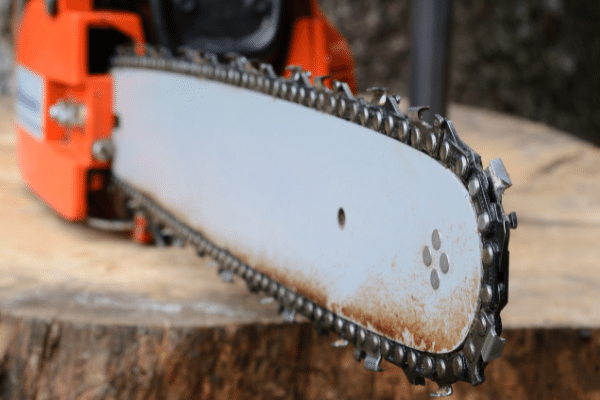
It’s a crucial tool for cold weather work, but in warm weather, you don’t want to activate the choke.
It can flood the engine since not as much heat is needed to start.
If your chainsaw won’t start and the weather is mild, double-check to make sure you haven't accidentally activated the choke - this is a quick way to fix a chainsaw for sure!
10. Fuel Needs To Be Replaced
The quality of fuel in your chainsaw matters.
If your saw has been sitting unused for a while, you may have issues getting it to start because the gasoline has begun to deteriorate.
Clean out the gas tank and refill it with fresh gas.
This problem is associated with #3 on our list that deals with a clogged carburetor.
When fuel sits in an engine for an extended amount of time, it can “varnish” or turn thick and smell like turpentine.
This thick substance can easily clog the jets inside the carburetor that are very small.
If you’re experiencing a faulty carburetor due to bad gasoline, the only way to fix it is to remove the carburetor and clean it, or simply buy a new carburetor and replace it.
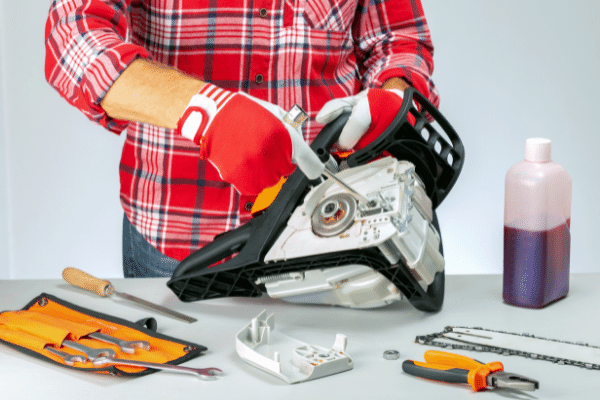
The good news is that the carburetor is usually easy to remove and clean out with a carburetor cleaner, or if you don’t want to take that route, replacement carburetors are usually pretty cheap.
Expert Tip:
If you have a small engine like a chainsaw or leaf blower that doesn’t want to run at full power, a lot of times you can make it run like new simply by using a higher octane fuel.
For example, I have a Husqvarna leaf blower that wants to bog down all the time at maximum throttle when mixed with 87 octane gas.
However, when I use a higher octane gas, like 89 octane, it runs perfectly.
Since the higher quality of gas is only slightly more expensive, it’s worth the extra few cents to use 89 octane gas which is the best gasoline choice for small engines.
Consider Bringing Your Saw To A Specialist - Fix A Chainsaw
All of the common chainsaw issues mentioned above are generally quick fixes that you can do yourself at home.
However, if you’ve run through the basic diagnostics and still can’t figure out why your saw isn’t running (or isn’t running well) it might be time to call in some reinforcements.
Bring your chainsaw to a specialist shop that can fix a chainsaw for you - without damaging your saw any further.

About the Author
Obsessed with firewood, Nick is behind over 350+ of Firewood For Life's articles, as well as countless reviews, guides and YouTube videos to help readers like you reduce heating costs and create the perfect fire.


